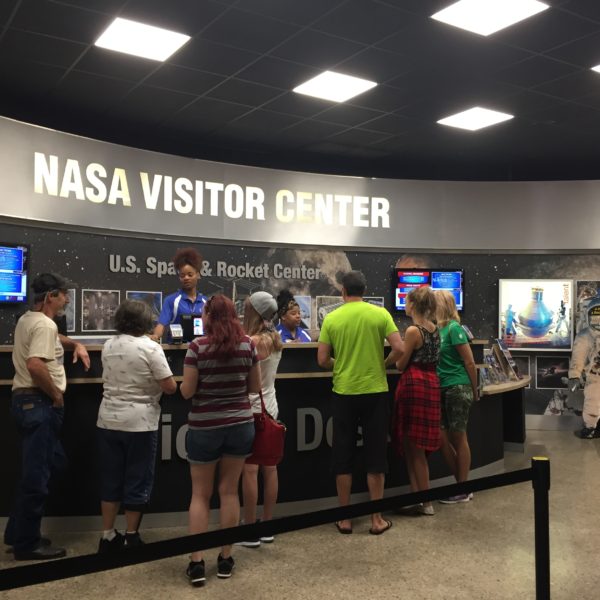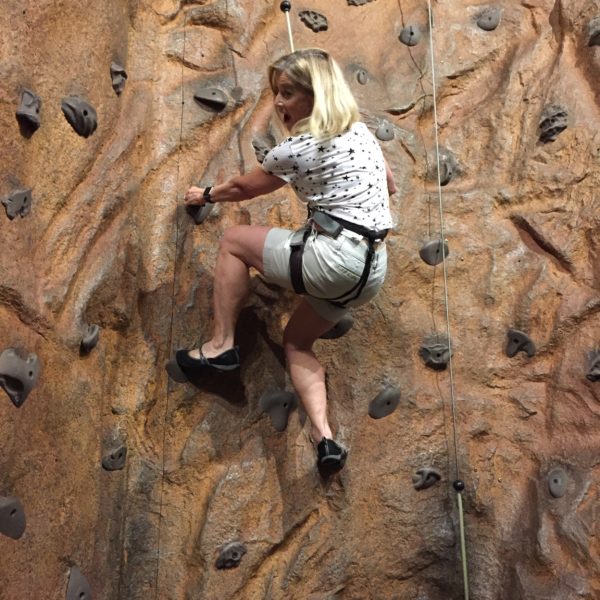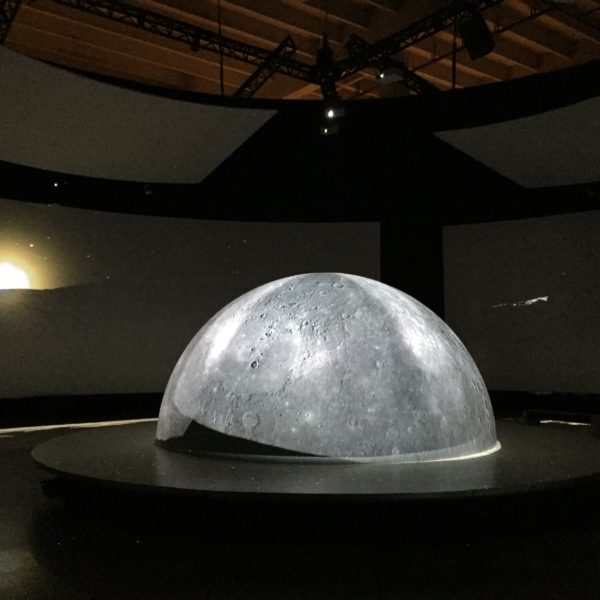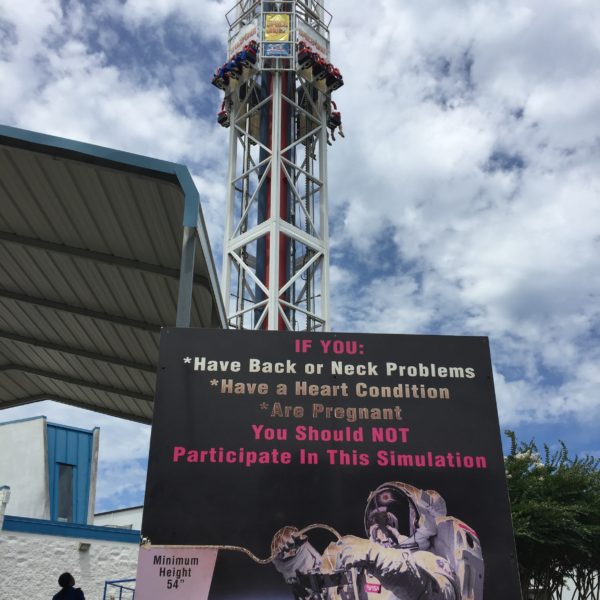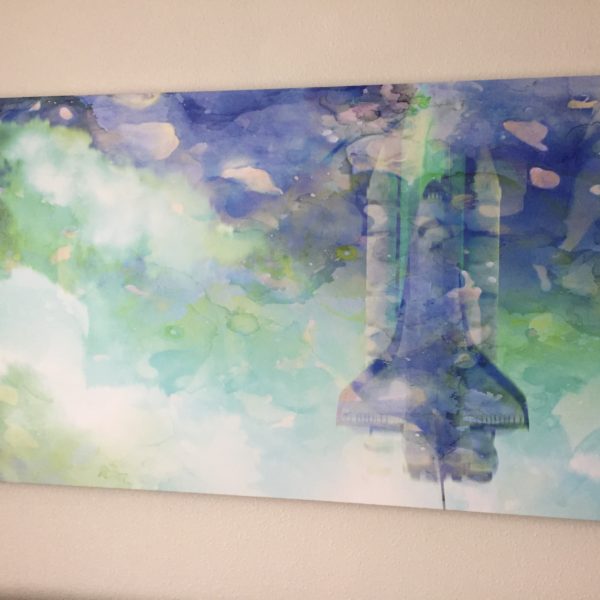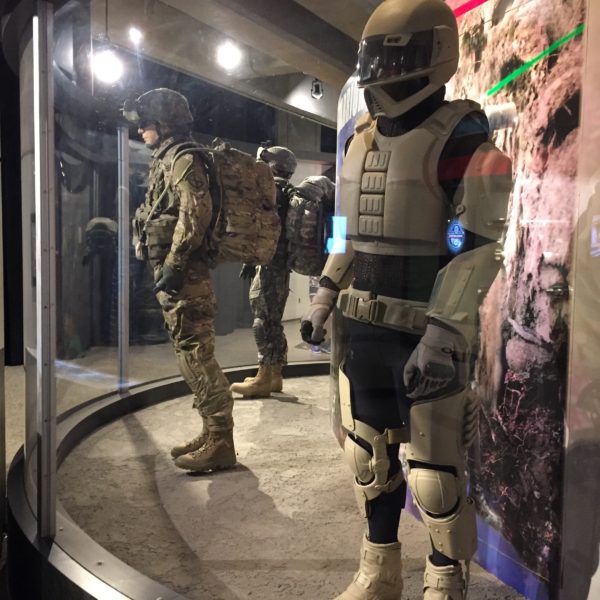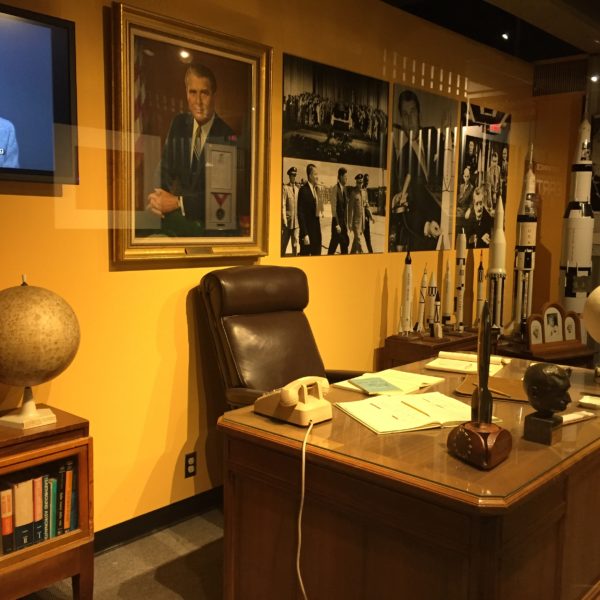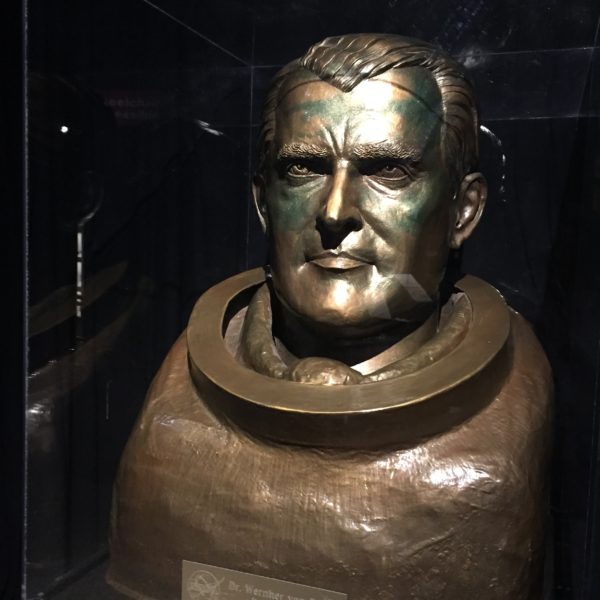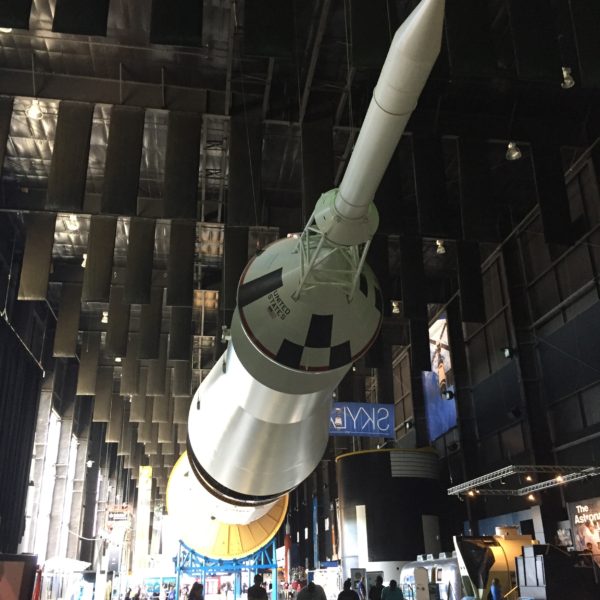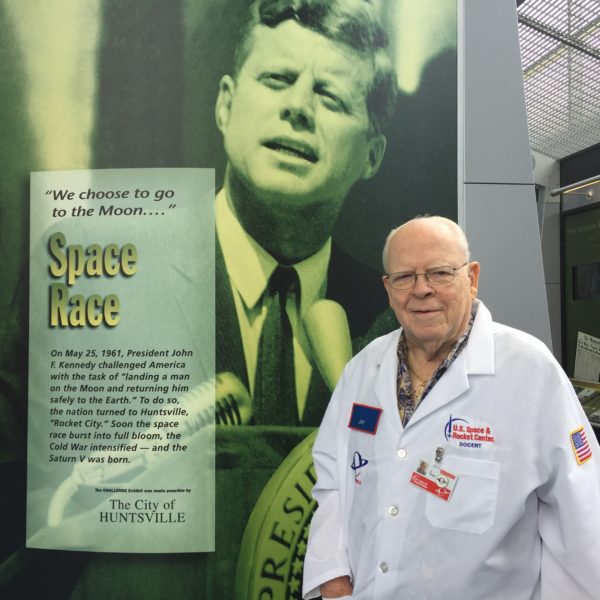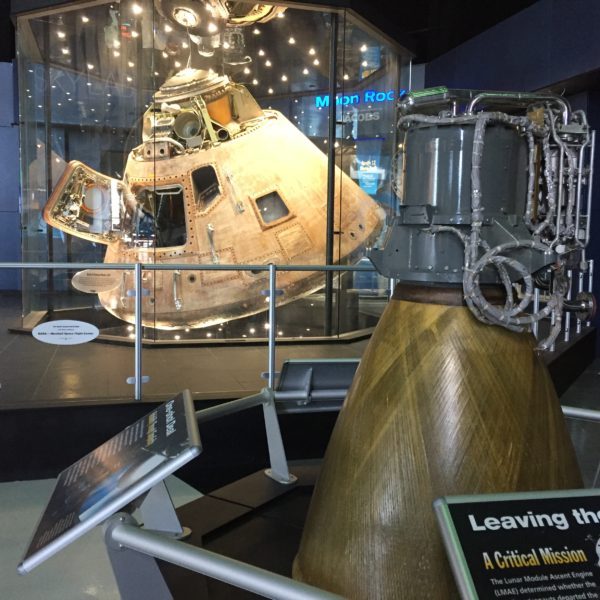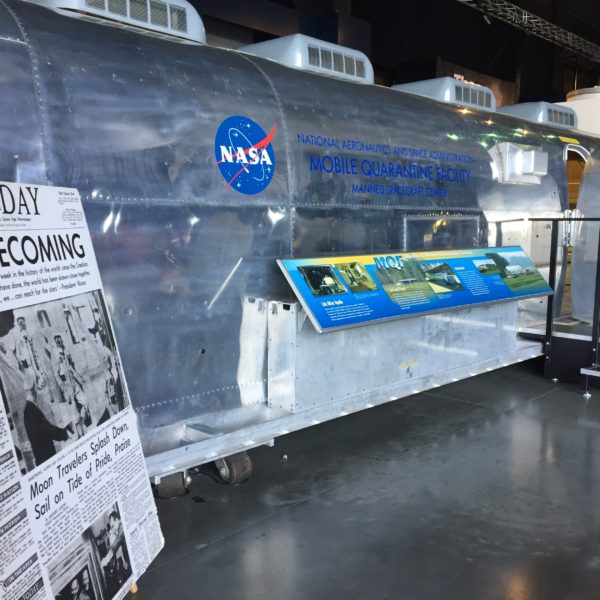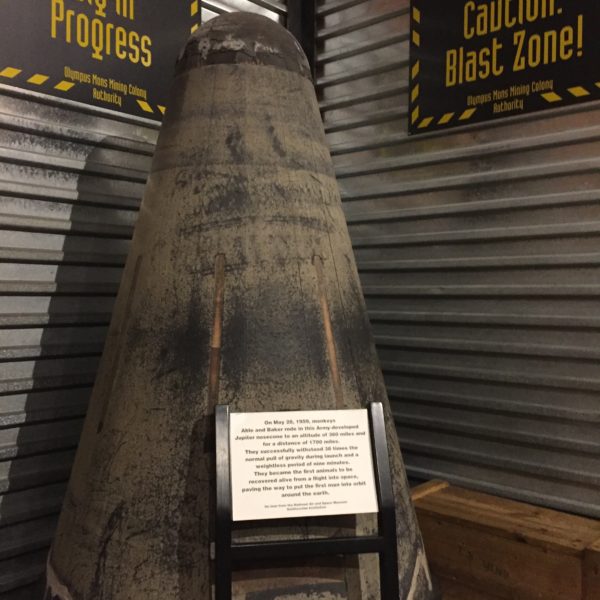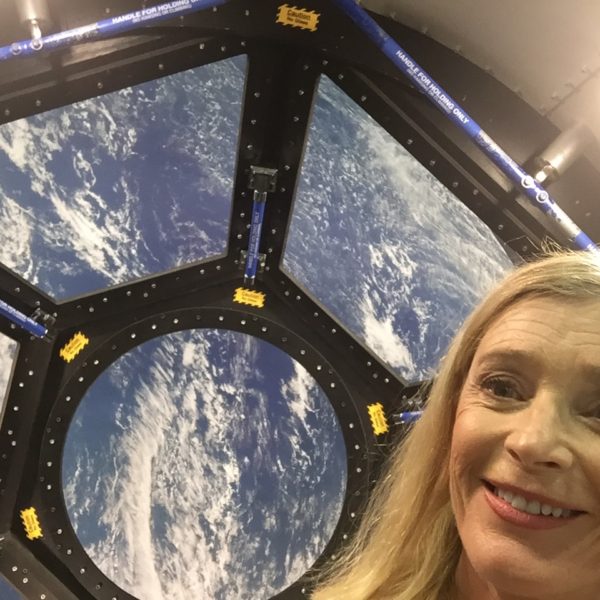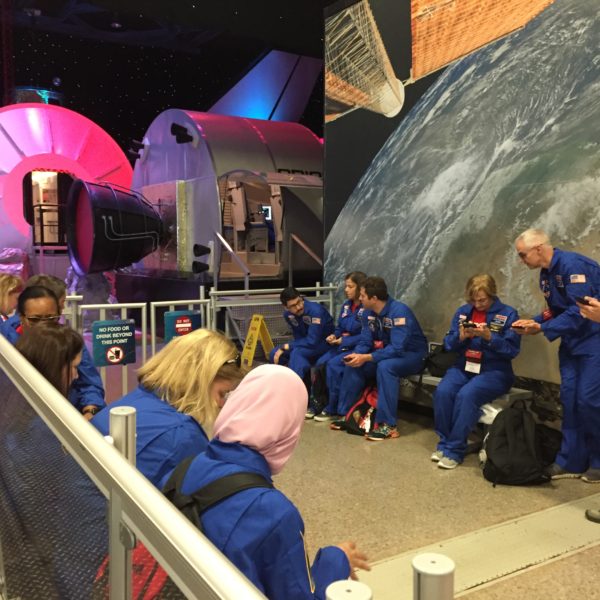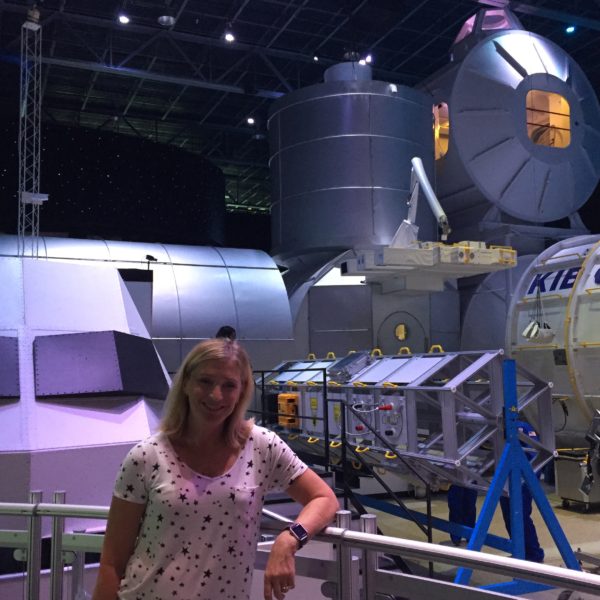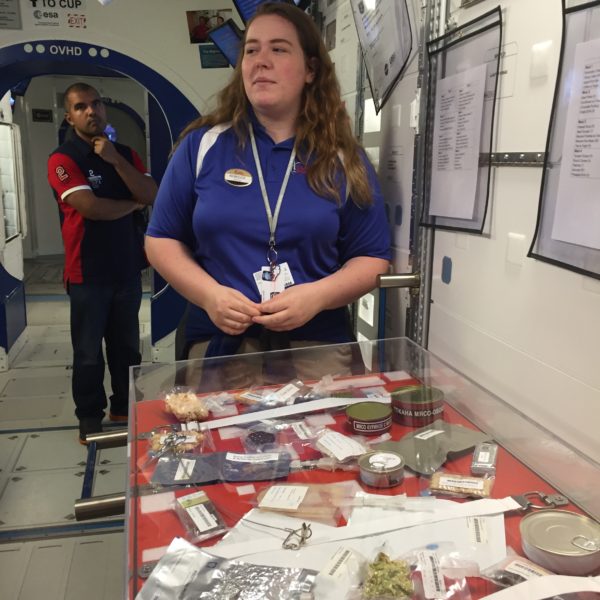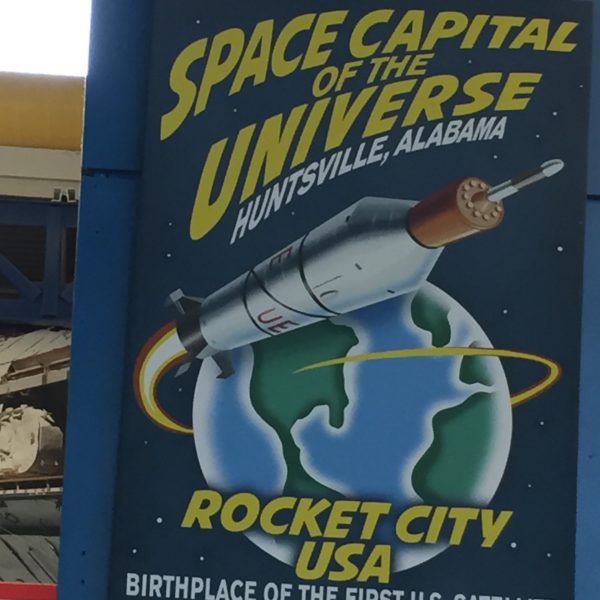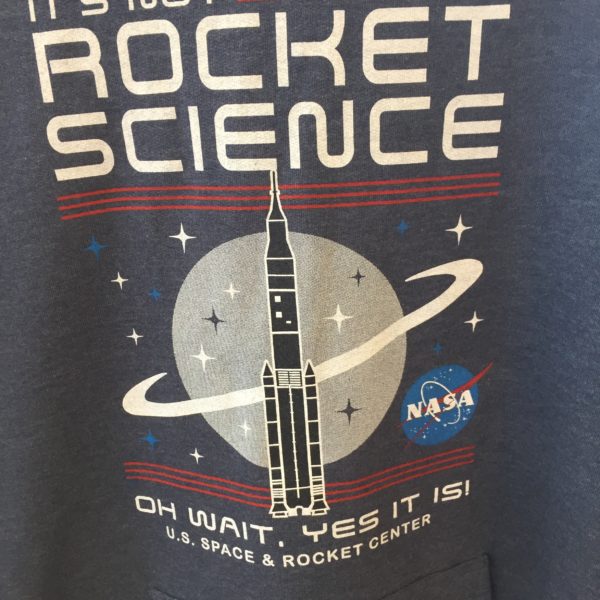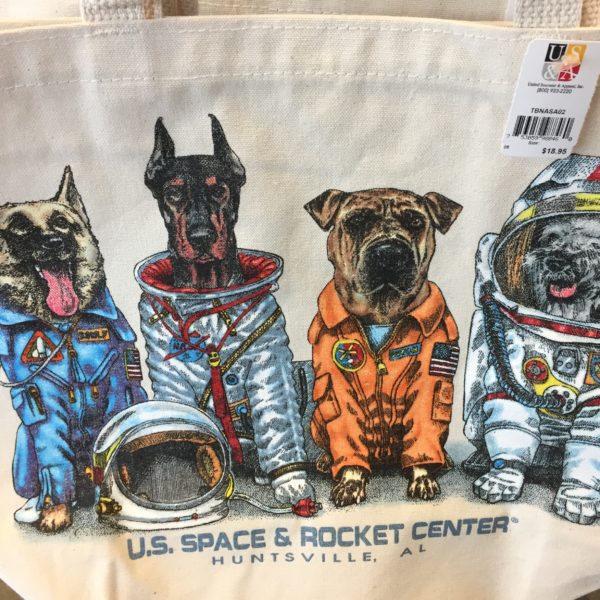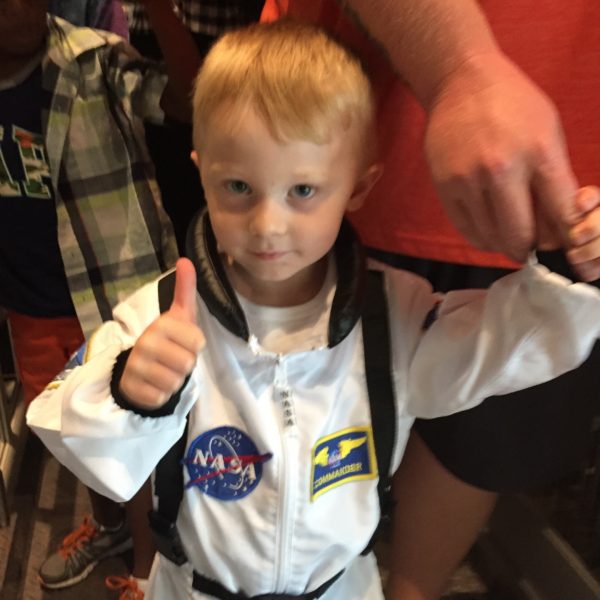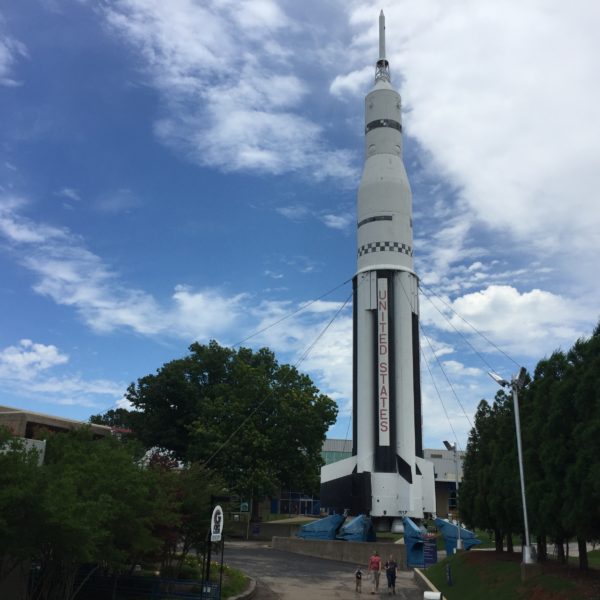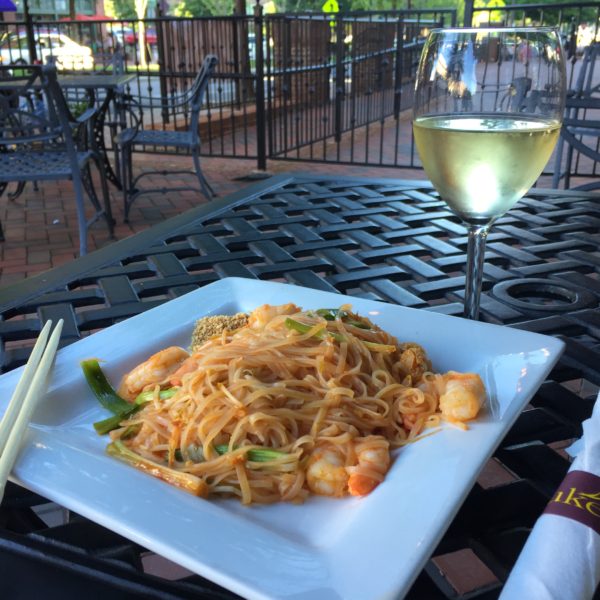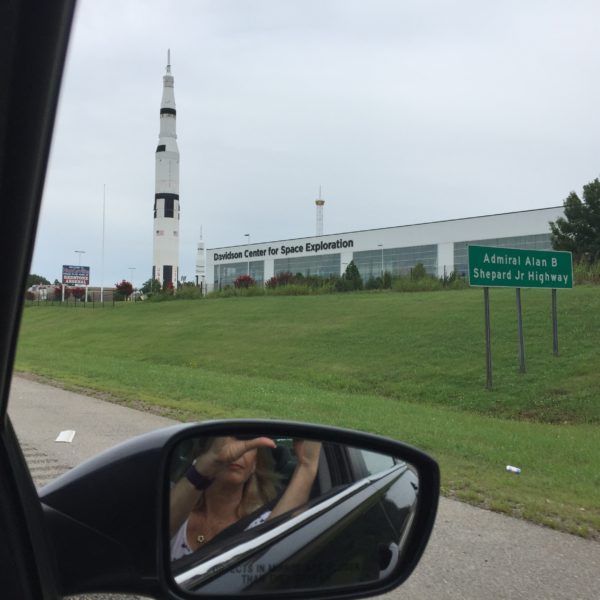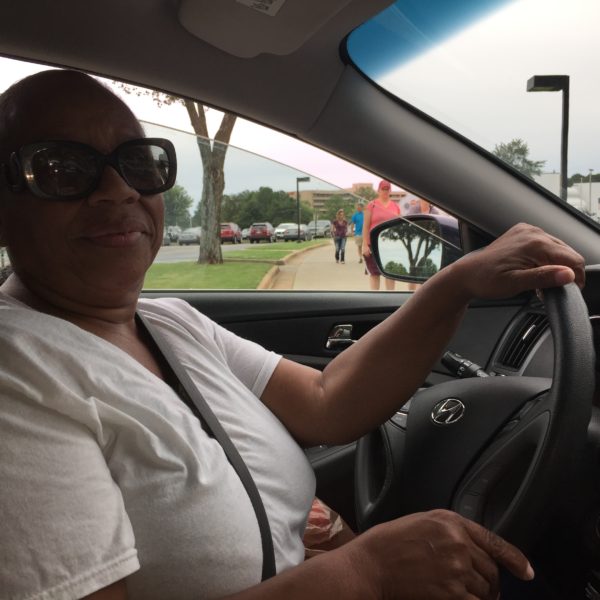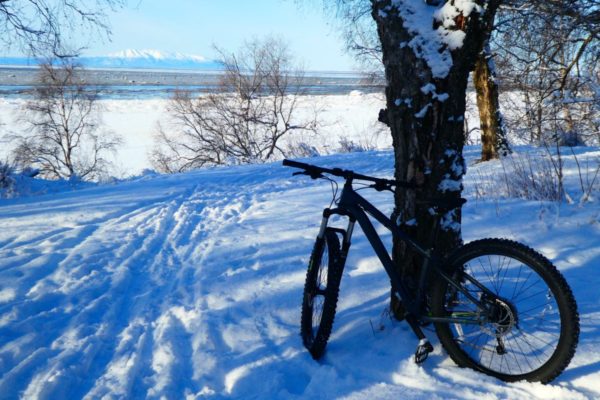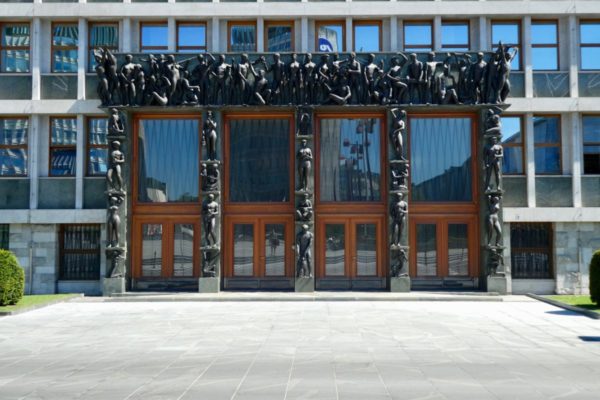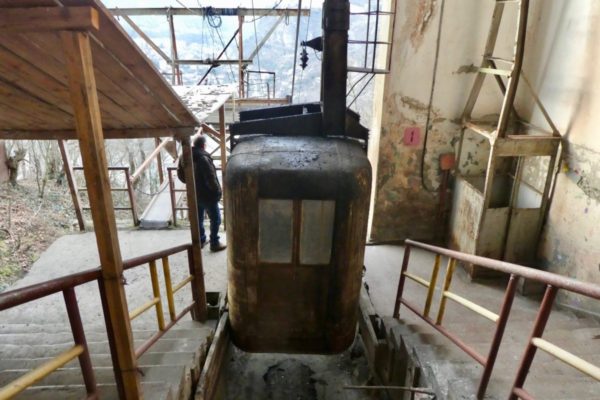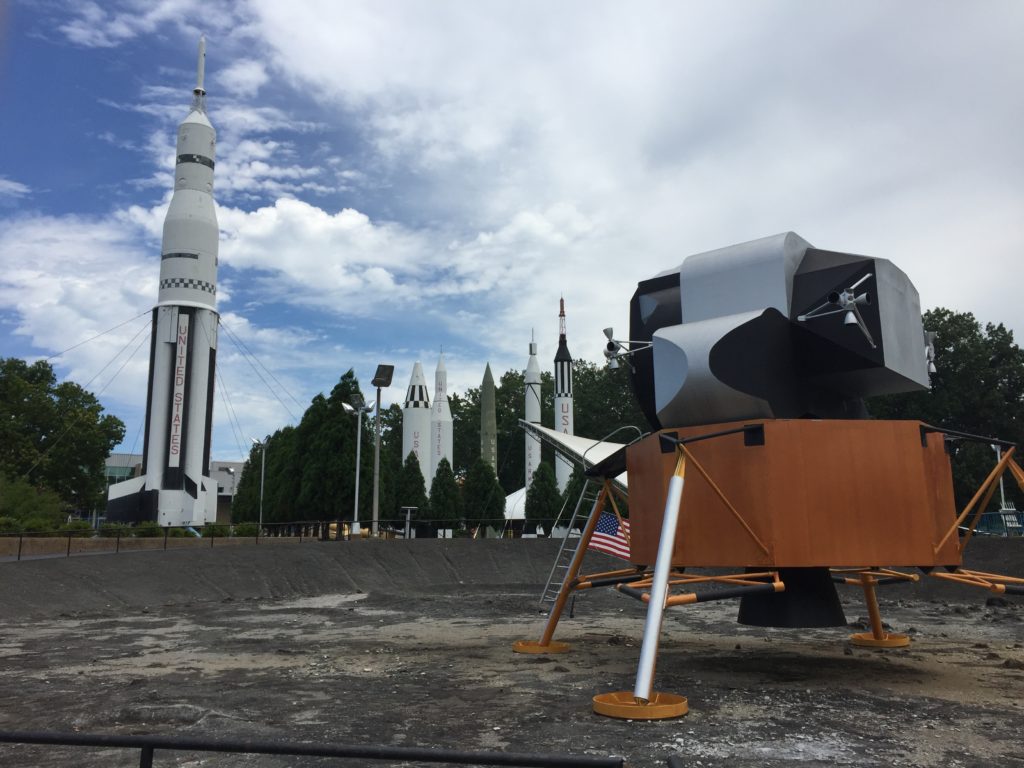

On a recent business trip, I took a detour to outer space. I planned an extra day to visit the U.S. Space and Rocket Center, which has a lot to offer space geeks of all ages. Sunday morning turned out to be the perfect time for a solo space mission. As one of the helpful exhibit guides explained, it’s before the weekend Space Camp lets out and the tour buses arrive. In the afternoon, the lines can be more than 100 people long.
Hands On, No Waiting at the US Space and Rocket Center
Compared to the Air and Space Museum in Washington DC, I found the Huntsville experience to be much more authentic and interactive. Before noon on a Sunday, it was possible to experience just about every ride and exhibit without waiting at all.
I had the Mars climbing wall to myself, walked right into the International Space Station tour, and joined an enthusiastic family from Lithuania to experience the G-forces of the Space Shot, which they enjoyed doing over and over again. Once was enough for me. I also zoomed and loomed around the solar system in a virtual video exhibit. Here’s my landing on Uranus. (Insert joke here.)
Where to See the US Space Shuttle Stack
You’ll get a closeup look at America’s real space machines, including the only space shuttle stack in the world. Los Angeles has a shuttle on display, but Huntsville is the only place where you can see a shuttle with its external fuel tank and rocket boosters. The pristine Pathfinder was the first shuttle, built as a demonstration model. It never flew in space.
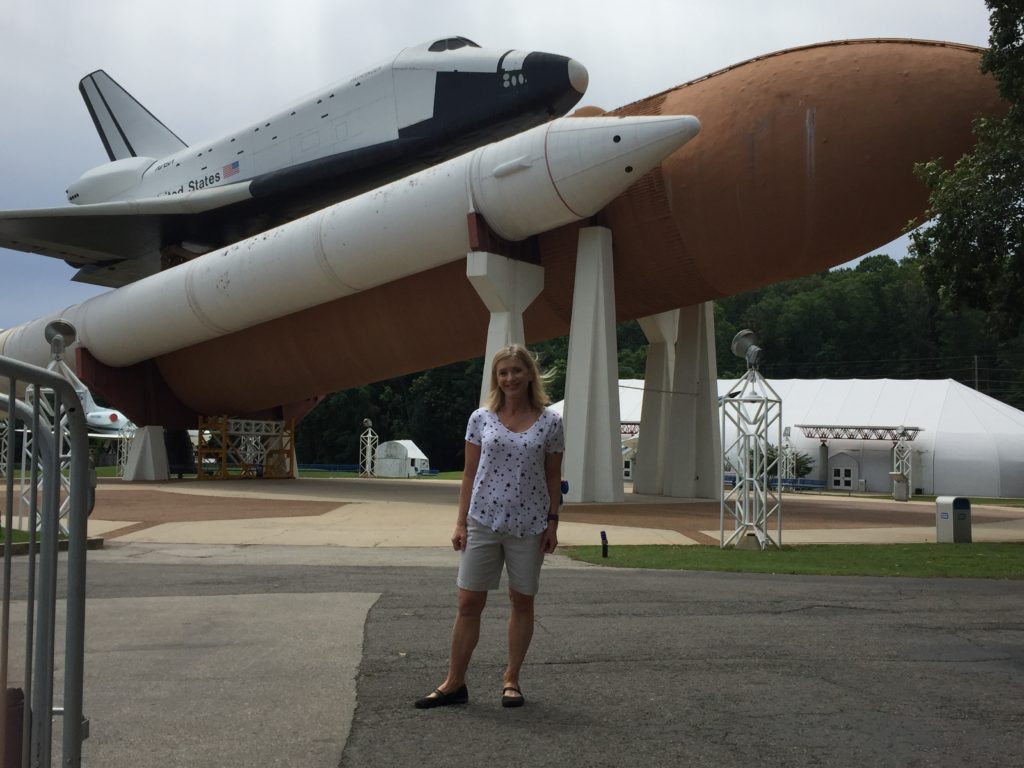
The US Space and Rocket Center in Huntsville Alabama is only place you can see the entire shuttle stack, the Pathfinder with its external fuel tank and rocket boosters. Renovations were planned in 2022, so check the website to make sure it is on view.
Huntsville is proud of its history as the Rocket City and even the art in my hotel room was a reminder. Most of the bombs and rockets used by the US military are made around here. One exhibit envisioned future US soldiers looking a bit like Star Wars stormtroopers. Werhner von Braun, the German rocket scientist who built America’s space program, had a place of honor at the time of my visit. Since then, the Nazi Collaborator Monument Project has raised alarm, citing the exploitation and deaths of slave laborers in the German rocket program when Von Braun was in charge. I checked with the museum and the public relations department said the exhibit is under renovation.
Meet a Real Rocket Scientist in the Saturn V Building
For me, the highlight was meeting Jay Foster, the former head of engineering and production, in the massive Saturn V building. Involved with the U.S. space a rocket program from the earliest days, he knew every inch of the massive rocket that towered over us. He’s one of the engineers and astronauts who volunteer their time as docents. I lamented that, at the time of my visit, Americans had to hitch a ride with the Russians to get to the International Space Station. “Don’t worry,” said the 86 year old rocket scientist with a twinkle in his eye. “Not for long. We’ll be back.”
In the shadow of the Saturn V rocket are artifacts of the moon landings. Including the airstream trailer that was used as the Mobile Quarantine Facility after Apollo 12, the second moon landing in 1969. The MQF was lost to history until 2007, when a space enthusiast spotted it being used in a fishing camp. Nearby, kids lined up to sit inside a replica of the Apollo space capsule. For the dads — closer to the size of the real astronauts — it was a tight fit.
Surprising finds are at every turn, including the capsule that took two monkeys into space in 1959 — the first animals to be returned to earth alive. You can also stand under a simulation of the powerful rocket blast the sent Americans to the moon.
Space Camp
Friendly guides give tours of the International Space Station mockup that is used for Space Camp. On the weekend of my visit, a specialized camp was underway for aspiring astronauts with hearing disabilities.
The mixed-gender groups of space cadets included several young women wearing hijabs. The US State Department sponsors trips here to inspire STEM talent from all over the world. Here’s a video made by a visitor from Morocco.
And yes! Space Camp is also for adults. These two local comedians checked it out.
The huge gift shop is worth a visit, even if you can manage to resist buying something. The kid-sized space suits and amusing slogans on the T-shirts will make you smile.
Terry’s Travel Tips
Getting there: The US Space and Rocket Center would be a fun destination for a road trip by car. It’s surprisingly difficult and expensive to fly in and out of Huntsville. I’m told that this is because the expense accounts of business travelers to the huge defense installations make it possible for airlines to hike up the fares. You’ll have to connect through somewhere like Atlanta or Houston. Staying over a Saturday night can reduce the price of your ticket by a few hundred dollars. And don’t forget to check out the low fares on CheapOair.
Staying in Huntsville: Local contacts recommended staying in the Village of Providence, a delightful neighborhood of recently built homes, restaurants and hotels. I stayed at the Homewood Suites, with all the usual amenities plus grits, biscuits and gravy for breakfast. This is the New South, with diversity and welcoming strangers everywhere! Nearby were several recommended restaurants including Taco Mama and Grille 29. I enjoyed a tasty pad thai at Phuket, sitting on the patio.
Beer and Rockets: If you happen to visit on a summer Thursday, a biergarten in the rocket park serves up German cuisine, perhaps a tribute to the many German rocket scientists who settled in the Huntsville area during and after World War II. Proceeds benefit local worthy causes.
Getting around: I didn’t need a rental car for this trip. A friendly Lyft driver took me to the Space and Rocket Center for about $16 plus tip, and was there when I requested a ride back to my hotel. Of course, if you plan on visiting other attractions like Huntsville’s Botanical Garden and the US Veterans Memorial Museum, you might want to drive.
Admission and Planning your Visit: Adult admission at the time of my visit was $24 dollars, a little more if you want to see one of the IMAX films offered. You can also buy a ticket for a bus tour of the nearby Marshall Space Flight Center. Complete details on the web site.
Final Thought: I was one of the National Semifinalists for NASA’s Journalist in Space program. Sadly, that mission was cancelled in the days following the 1986 Challenger Disaster. Read about it here.
Want more stories like this? Like @strangersinthelivingroom on Facebook, and sign up for the occasional email when there is a new post. Follow me on Trip Advisor @strangersblog. Pinning this post? Get more travel ideas from Strangers in the Living Room on Pinterest.
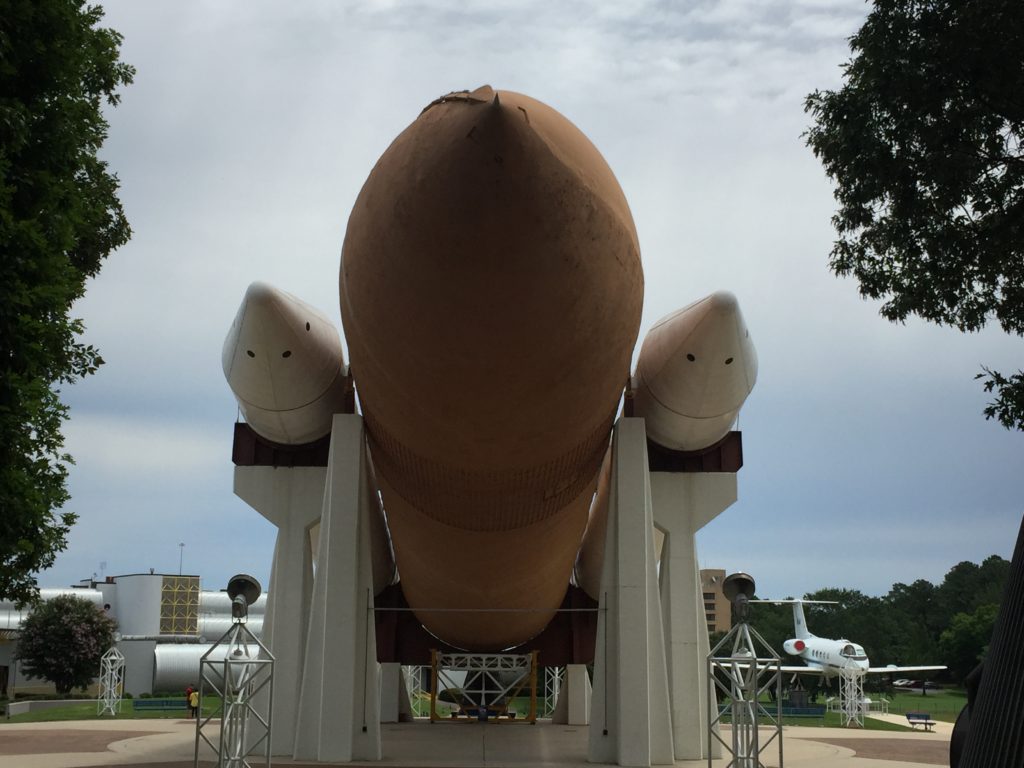
The space shuttle like you’ve never seen it before, on display at the US Space and Rocket Center in Huntsville, Alabama.

